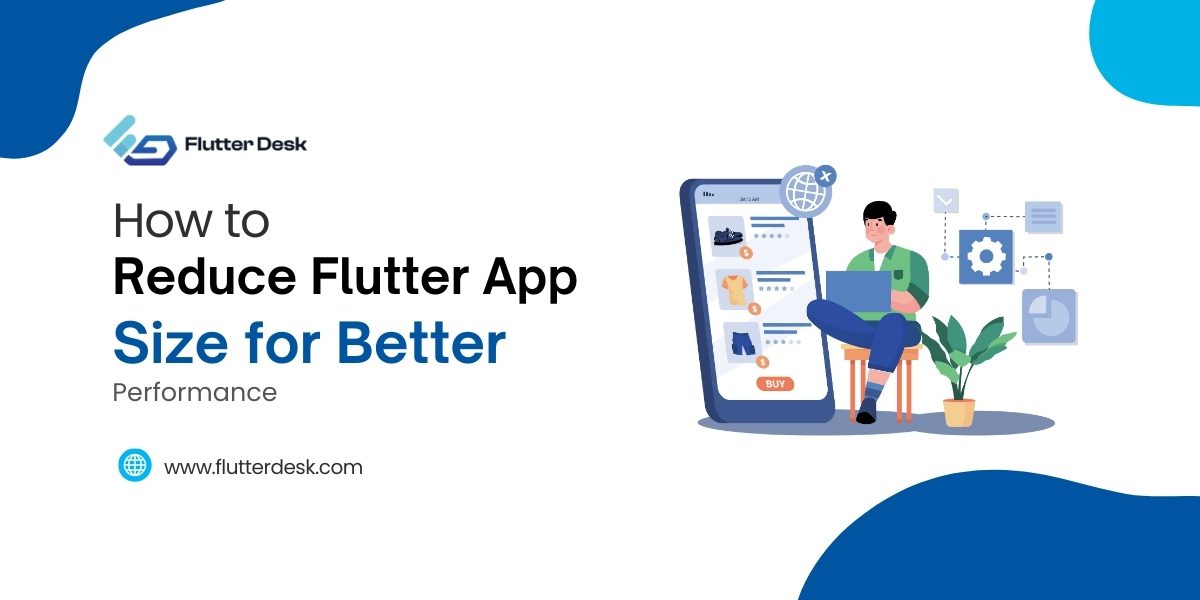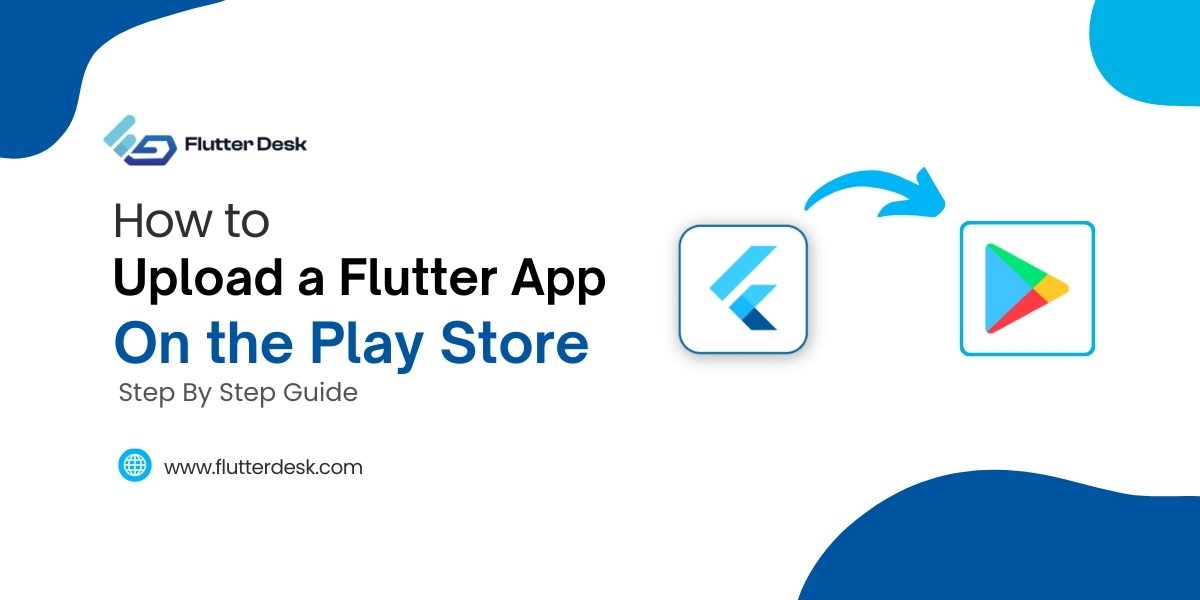Flutter Deeplink has changed how mobile apps connect with web links and content. Deep linking helps users go directly to specific parts of an app from websites, emails, or social media. This is important because it keeps users engaged, helps with marketing, and makes apps easier to find.
In the Flutter world, knowing how to use deep linking is very important. As 2023 unfolds, techniques for Flutter deeplink navigation have gotten better, giving developers more ways to create smooth user experiences. These new methods can make an app stand out and keep users returning.
What is Deeplink in Flutter?
Flutter deeplink is a technique that allows for a direct connection between a web URL and a specific section within a Flutter app. Instead of merely launching an app, a deeplink can navigate users to a precise location, be it a promotional page, a user profile, or any other segment. This is done using Flutter deeplink navigation.
When combined with parameters, as in Flutter deeplink with parameters, this navigation can be further tailored, delivering a personalized user experience. It’s an essential tool, especially when you want your app to react to external links, whether from an email, website, or Flutter universal link.
How To Add Deeplink In Flutter?
Pre-requisites:
- Flutter Version: Ensure you’re using Flutter version 2.0 or above for compatibility.
- Dependencies: Make sure to add the necessary packages, such as flutter_deep_linking or others, depending on your preference, to your pubspec.yaml file.
Step-by-Step Guide
- Install the Package: Add the desired deep linking package to your project. For this guide, we’re using flutter_deep_linking. Then run flutter pub get to fetch the package.
dependencies: flutter_deep_linking: ^latest_version
2. Configure the Deeplink: In your main.dart, integrate the DeepLinking widget to specify the routes.
DeepLinking(
routes: {
'/user/:id': (route) => UserPage(userId: route.parameters['id']),
// Add more routes as needed
},
);
3. Handle Navigation: Incorporate a function to handle the deep link navigation. This function will extract the route and navigate users accordingly.
import 'package:flutter/material.dart';
import 'package:flutter_deep_linking/flutter_deep_linking.dart';
void main() {
runApp(MyApp());
}
class MyApp extends StatelessWidget {
@override
Widget build(BuildContext context) {
return MaterialApp(
home: DeepLinking(
routes: {
'/user/:id': (route) => UserPage(userId: route.parameters['id']),
// Add more routes as needed
},
child: MyHomePage(),
),
);
}
}
class UserPage extends StatelessWidget {
final String userId;
UserPage({required this.userId});
@override
Widget build(BuildContext context) {
return Scaffold(
appBar: AppBar(
title: Text('User Page'),
),
body: Center(
child: Column(
mainAxisAlignment: MainAxisAlignment.center,
children: [
Text('User ID: $userId'),
ElevatedButton(
onPressed: () {
// Handle navigation back to the home page
DeepLinking.of(context).open('/');
},
child: Text('Back to Home'),
),
],
),
),
);
}
}
class MyHomePage extends StatelessWidget {
@override
Widget build(BuildContext context) {
return Scaffold(
appBar: AppBar(
title: Text('Deep Linking Example'),
),
body: Center(
child: Column(
mainAxisAlignment: MainAxisAlignment.center,
children: [
Text('Home Page'),
ElevatedButton(
onPressed: () {
// Handle navigation to the user page with ID 123
DeepLinking.of(context).open('/user/123');
},
child: Text('Open User Page'),
),
],
),
),
);
}
} Testing Deeplinks
- Manual Testing: Use deep link URLs directly on your device or emulator to check if they open the app to the correct location.
- Automated Testing: Implement unit and widget tests using the Flutter testing framework to simulate deep link navigation and ensure it behaves as expected.
Following the steps above, you’ll successfully integrate deeplink navigation into your Flutter app, enhancing the overall user experience.
Flutter Deeplink Parameters
Deeplink parameters are the dynamic segments or query strings within a deeplink URL that carry specific data to determine the actions or destinations within the app.
These parameters make deeplinking versatile, allowing developers to offer a personalized experience based on different triggers. Here’s a breakdown of the kinds of parameters and their functions:
- Path Parameters: These are embedded directly in the URL path. For instance, in yourapp://product/123, 123 is a path parameter representing a product ID. When this link is clicked, it could directly open product 123 in the app.
- Query Parameters: These are key-value pairs added after the path segment of the URL, typically after a ? symbol. For example, in yourapp://product?category=electronics&price=under100, category and price are the keys, and electronics and under100 are their respective values. The app can use this information to filter and show products under the electronics category that are priced under 100.
- Fragment Parameters: These often come after the # symbol in a URL and usually point to a specific page section. For example, yourapp://article/456#comments could take the user directly to the comments section of article 456.
- Contextual Parameters: These are often not visible in the URL but carry information about the context from which the deeplink originated. They can provide information like the source of the link (e.g., email, SMS, social media) or the associated campaign. This data is crucial for analytics and understanding user behavior.
The use of parameters can be further enhanced when combined with Flutter remoteconfig. By tweaking parameters remotely, developers can change user destinations without altering the deeplink structure, offering flexibility in marketing campaigns and user redirection.
Types of Deeplinks
- Traditional Deeplinks: These are the basic form of deep linking where the app can be opened using a custom URL scheme (e.g., yourapp://page). However, if the app isn’t installed, this link might fail or redirect users to the app store.
- Universal Links: These are advanced deep links that allow for a more seamless experience. If the app is installed, the Flutter universal link opens the specific location within the app. If not, it gracefully falls back to open a web page or an app store link.
- Dynamic Links: A further enhancement, these links ensure a smooth user journey even if the user installs the app after clicking the link. Flutter dynamic links can remember the original deep link intent and direct the newly installed app accordingly.
- Deferred Deeplinks: Similar to dynamic links, these remember the initial intent even if the app wasn’t installed. Once the user installs the app, they’re directed to the specific content or offer they were initially intended to view.
What is the Difference Between Deeplinks and Dynamic Links in Flutter?
Dynamic links are advanced deep links that ensure a consistent user experience, whether or not the app is installed. If clicked on a device without the app, the link can redirect the user to the App Store to download the app and then continue to the intended in-app location once the app is opened for the first time.
| Feature/Aspect | Flutter Deeplink | Dynamic Link Flutter |
| URL Scheme | Custom scheme (e.g., yourapp://page) | Standard HTTPS URL with the ability to redirect |
| App Not Installed | Typically fails or redirects to App Store only | Can redirect to a web page or the App Store |
| Post-Install Behavior | No retained memory of the intended destination | Remembers the intended destination after installation |
| Platform Support | Mostly platform-dependent | Cross-platform, works seamlessly across iOS and Android |
| Use Case | Direct app content access for existing app users | Marketing campaigns, user onboarding, content sharing |
| Integration with Firebase | Typically independent | Integrated with Firebase for analytics and tracking |
What Is the Difference Between Deeplink and Universal Link?
| Feature/Aspect | Deeplink | Universal Link |
| Platforms | Both iOS and Android, but behavior may vary | iOS (Android’s equivalent is App Links) |
| URL Scheme | Custom scheme (e.g., yourapp://page) | Standard HTTPS URL |
| App Not Installed Behavior | Typically fails or redirects to the App Store | Opens a fallback URL, like the website or App Store |
| Platform Dependency | More platform-specific behavior and setup | More consistent behavior across platforms |
| Use Case | Specific app actions, often used within the app ecosystem | Bridging the gap between web content and app content |
| Benefits | Direct, app-specific actions; can be deeply customized | Seamless user experience, better SEO, one link for both app & web |
| Limitations | May not work if the app isn’t installed; platform variances | Requires server-side configuration, can be more complex to set up |
Deep Linking Packages
uni_links
- Description: Offers support for universal links on iOS and Android app links.
- Features: Can handle cold and warm starts, works with or without the previously launched app.
- Usage: Best suited for apps aiming to implement universal links or app links seamlessly.
Firebase_dynamic_links
- Description: A plugin to incorporate Firebase Dynamic Links.
- Features: Remembers the deep link even after the app installation integrates well with other Firebase services.
- Usage: Ideal for marketing campaigns or any scenario where you want to ensure the link’s intent is preserved post-app installation.
app_links:
- Description: Provides deep link navigation focusing on type safety.
- Features: Uses a declarative approach, ensures type safety, and offers a structured way to handle deep links.
- Usage: Suitable for larger apps that need structured and type-safe deep link handling.
The Benefits of Deeplink
Deep linking has emerged as a pivotal tool in enhancing the user experience within mobile apps. By employing Flutter deeplink navigation, developers can guide users straight to targeted app sections, amplifying user engagement. Integrating Flutter deeplink with parameters offers a personalized touch, tailoring content based on individual user behaviors or interests.
Furthermore, with tools like Firebase dynamic links, not only can the app’s onboarding process be simplified, but its promotional campaigns can also be tracked with precision. Remember, Android deep-linking capabilities ensure a seamless bridging between web URLs and in-app destinations, boosting user retention and reducing drop-offs.
Conclusion
With Flutter leading the charge, integrating deep links has become a seamless affair. For businesses seeking to harness the full potential of this technology, it might be a prudent decision to hire a Flutter mobile app developer. Whether it’s the precision of Flutter deep link navigation, the adaptability of dynamic links, or the broad embrace of universal links, Flutter ensures that developers and businesses alike have the tools to craft a compelling and engaging user journey. Deep linking not only bridges the divide between web and app but also stands as a key instrument for enhanced user retention, personalization, and actionable marketing insights. As we stride forward in app development, deep linking remains a pivotal strategy, directing users to the very core of our digital narratives











